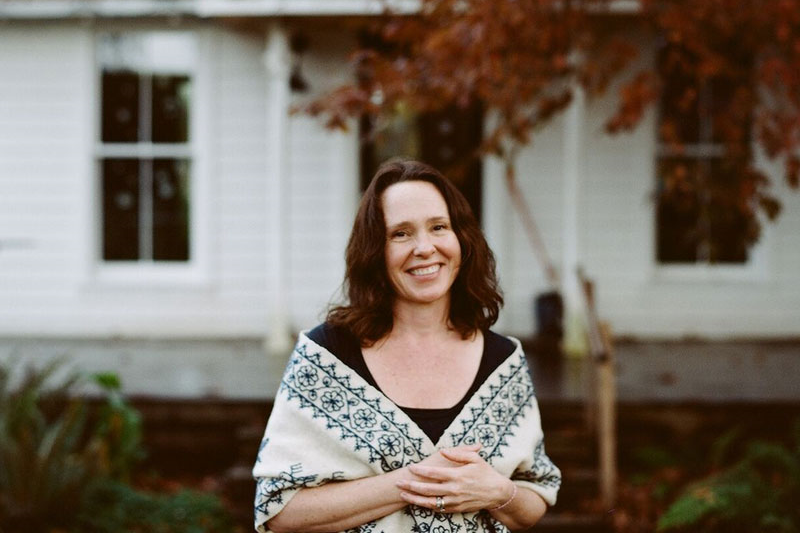The 50 States Project is a yearlong series of candid conversations with interior designers, state by state, about how they’ve built their businesses. Today, we’re chatting with Portland, Oregon–based Jessica Helgerson, founder of Jessica Helgerson Interior Design, about developing a three-pronged criteria for project selection, the challenges of balancing residential and commercial work, and why she’s open about her politics on Instagram.
Several designers I’ve interviewed who started their careers working for you have told me that the office environment you created empowered them to start their own firms. What’s the secret to that kind of working relationship with your team?
I generally lead from behind. I try to see where people shine and what they’re good at, and then support [them in] the sides that are trickier for them. I think our firm does better work if we’re nurturing creativity and making people feel confident about their design skills.
We don’t have [separate] manager and designer parts of the firm—everyone’s a designer. Of course we have accounting, but within the design side of the firm, everyone is hired for their portfolio—we hire them because we think that they have lots of potential. It isn’t so much, “Are they junior, are they senior?” We think: Are they good? And then, inevitably, they’ll have challenges with time management, or they’re good at micro design but not macro, so I’m always trying to nudge and shake and boost instead of lead. I mean, sometimes I’ll have a good idea that I get excited about and I’m like, “This is what we’re going to do,” but that’s actually not the norm.
What made you realize that was the approach you wanted to take?
My first design job was at an architecture firm in Santa Barbara, where I grew up, and it was incredibly useful because it was a good example of all the things I didn’t want to do or be. It was the owner out in front and then all the little slaves in the back working 20 hours a day, not going to client meetings, and not being celebrated at all. He was super charming and fun to hang out with, and I enjoyed my time there, but at a certain point I was asked to white-out a bunch of invoices because we hadn’t been marking things up properly and the clients had asked to see all the receipts, and I just thought: This is not who I want to be.
I was simultaneously on the board of a sustainability-focused nonprofit where we were thinking we were going to change the world. I had this one path outside of my professional career that I felt so great about, but I really wrestled with my actual job, and I thought, I need to do my own thing. So I opened my office 20 years ago, and one component was wanting a pretty egalitarian work situation where each person gets to thrive. And we do have real longevity in the staff because of that, I think.

How long were you there before moving to Oregon?
We moved here 14 years ago, so six years.
What are the challenges of moving a relatively established design business?
I opened the business in Santa Barbara as a partnership with my best friend at the time, but we wound up not being great partners, so I opened my own office and she came to work for me, and that worked great. She was happy, I was happy—she liked me to make the tougher decisions, and it was fine. My husband and I pretty spontaneously decided at his brother’s wedding to move to France, so she kept the business running for about a year in Santa Barbara [while we were there] and sort of wound it down—didn’t take on any new projects, just wrapped up everything we had going, which was amazing. At the end of the year, we decided to come back to the States and we moved to Oregon.
It was tough here at the start. I remember interviewing for a project that I would not have wanted under normal circumstances—it was a big, hideous McMansion-y thing—but I wanted it [at the time] because I didn’t have any work. I had five years of experience, I’m interviewing with this lady, and she says, “You know, I like your work and it seems like a good fit, but I just don’t feel like you have enough local experience.” And I remember thinking: Oh, my gosh, how am I ever going to claw my way out of this? But actually, moving to Oregon when I did was pretty fortuitous. Portland had been very bootstrappy, kind of rough-and-tumble—there really were no design firms here at that point—and I came along with a wave of California émigrés who valued design and it just started happening pretty well, pretty fast.
You do a mix of residential and commercial work—has that always been the case?
We’re 100 percent residential right now, but I always really wanted to encourage project diversity. I’ll always take a project in a new place over a project in a place where we’ve already worked, or a new building type. I thought that balance of commercial and residential was vital for keeping us sharp. Doing a dentist’s office or a laundromat—these projects aren’t necessarily super glamorous, but they have us learning new things or thinking in new ways. But I’ve had to struggle to keep the commercial side alive. The residential has always just come really easily, but the commercial work—we interview for it, but we don’t always get it.
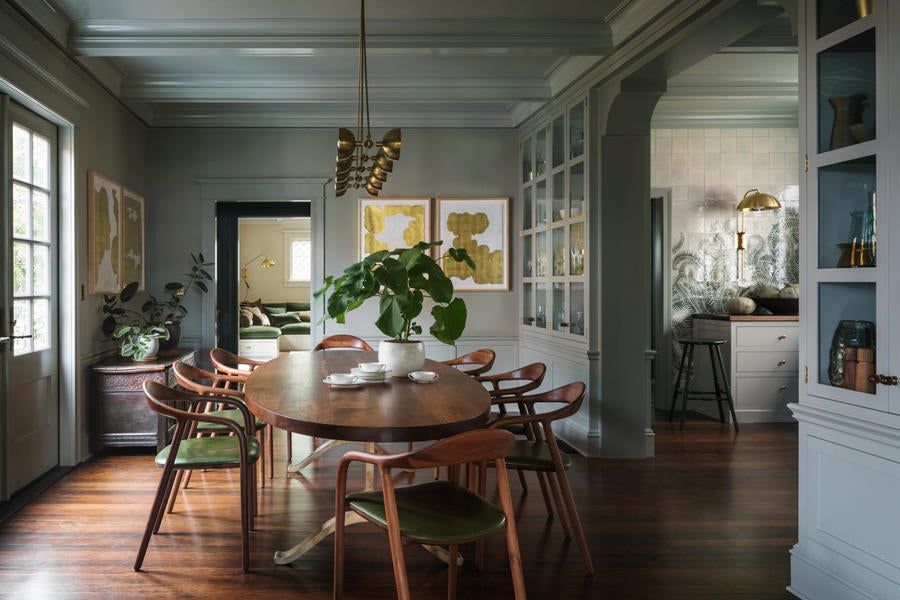
What is it about the commercial pipeline that’s more difficult to sustain, do you think?
One thing that we wrestle with is that we bill hourly for residential projects, but we do fixed-fee proposals for commercial projects. It’s always this push-and-pull between how much time we know we’re going to spend and how much we think they want to pay, and I think our proposals are usually a little bit high—and even then, I basically subsidize commercial work. We’ve never made a penny on a commercial project. So maybe there’s that, or maybe we’re perceived as not having a lot of commercial experience. I don’t know why. I joke about this, though it’s not entirely untrue, that the most fun we’ve ever had as an office—like, the very best projects—are the commercial projects that we do a conceptual pitch for and then don’t get, because it’s so fun to think about it and we do something really great, we think we’re so smart, we pitch it, and then we don’t have to do the damn thing.
That’s so great. What does your team look like today?
It has grown over time. We were up to four at certain points in Santa Barbara, and then starting out here, it was just me—I was sharing office space with my husband, which we’re actually back to now [because of the coronavirus pandemic]. As I had enough work to hire someone, I did, and then I had more work and I hired someone else. At this point, we get a lot of inquiries, but we’re not eager to grow unless we’re growing in some thoughtful way. We don’t take on every project that comes in the door and we’ve got a list of criteria for what feels like a good fit. I’d rather get better than bigger, I think.
Had you been thinking that before the pandemic, or has COVID crystallized that for you?
I’ve been thinking that [for a while]. We’re the size we need to be to take on the amount of projects that we just can’t say no to because they’re so great.
How many is that?
We have 12 staff and 20 to 25 projects, from [those where] they’ve barely signed the letter of agreement and we’re just getting started, to some [where] we have three more pieces of furniture to find and we’re done.
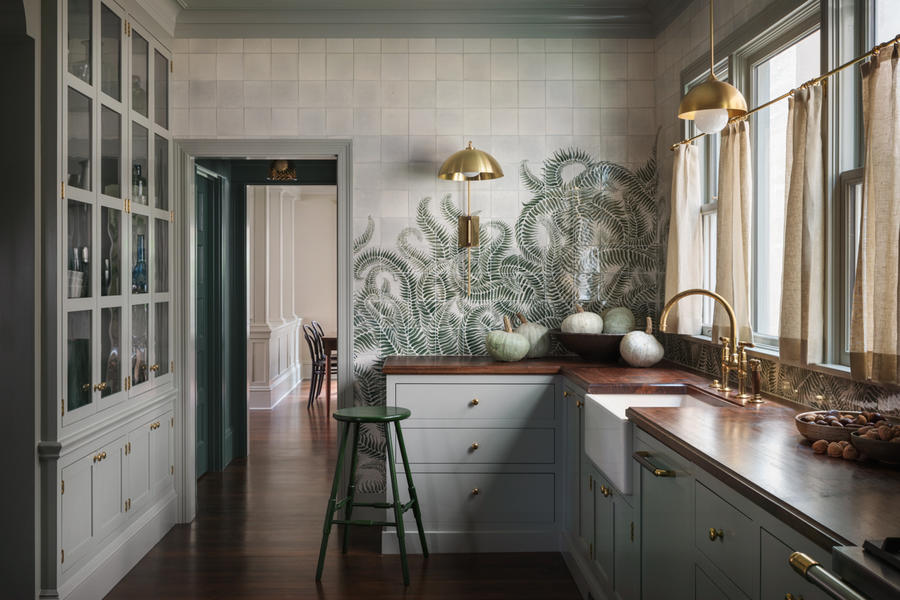
How do you decide what you do say yes to?
It’s this triumvirate of: Does the client appear and seem in correspondence to be a kind and pleasant person who will not make us crazy? That’s one. And then: Does the house or building or structure we’re going to be working in have merit? We’re going to spend a lot of time thinking about it and fussing over it, so does it deserve all that love? And lastly: Does the client have the budget that we need to do it nicely?
I love that idea of asking, ‘Is the property worth it?’
I mean, that isn’t always the case. Sometimes we don’t hit every one, and that’s the one that is the most easy to be flexible on if the clients are really willing to start from scratch. We’re working on a project in Brooklyn right now—we just Skyped with the contractor yesterday, and it’s getting really cute, and it was really not cute [when we started].
In terms of lack of architectural interest?
Yes, it’s in this really funky place called Manhattan Beach—a weird neighborhood in Brooklyn when you’ll have this falling-down 1970s shack next to the European-style mansion with the lions at the gate.
Lions and columns next to the metal awning?
Yeah! It’s all over the place. So this was a metal-awning one—but I just liked the client so much instantly. She’s smart and nice and they had plenty of money to do it right. We basically only kept the footprint; she really liked fancy French design, but I thought French didn’t make sense, so we landed on this French Quarter in New Orleans look, and I just love it. It’s a great project, and that house was a dump. So sometimes they don’t have great bones.
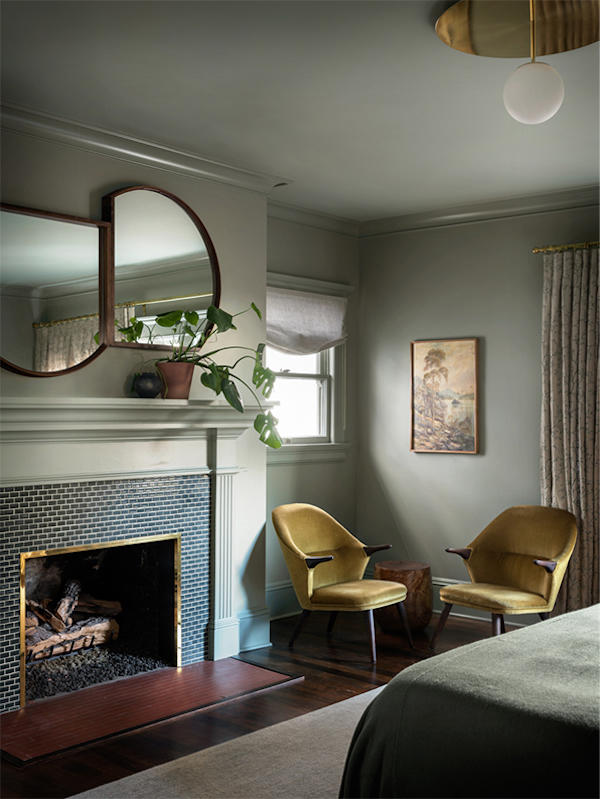

How do your clients find you?
At this point, it is entirely Instagram.
Have you shifted your Instagram approach as a result?
I have gotten braver about being honest about the things I think, and I think that has not served us badly. I feel a lot of concern for our country, I feel anger about the discrepancies in wealth, I feel sad about the environmental situation—so many things. And so I talk about them on Instagram, and then when we wind up getting clients who care about those [things], at least I don’t fight with them.
I’ve also been unfolding a [kind of] interior design class over the last couple years, posting before-and-after plans and explaining as clearly as I can in that limited [caption space] why we made the space planning and aesthetic decisions that we made. I’ve been doing this for 20 years, and I like the kind of nuts-and-bolts-y parts of it all, so I’ve been trying to be as explicit as possible about our process, and that’s fun.
So you do your Instagram yourself?
I do. I really like it.
You have a kazillion followers. When did it take off for you?
It’s not a kazillion, really. I’m always laughing about that—I’ll see some dog who has 7 million followers, and I’m like, Don’t get too cocky! Maybe five or six years ago, Chelsie [Lee], who’s worked at the office for nearly a decade now, told me we should be on Instagram. We were a little late to the game and we co-ran it at the start, and then I just realized I liked having my voice. In the office, I’m often kind of running things from behind, and I liked just being the voice [on Instagram]. I feel like as we’ve grown, and because it’s nearly entirely women and it’s quite democratic, things get discussed ad nauseam, but I like being able to say something and not ask for permission—I just say what I want to say.
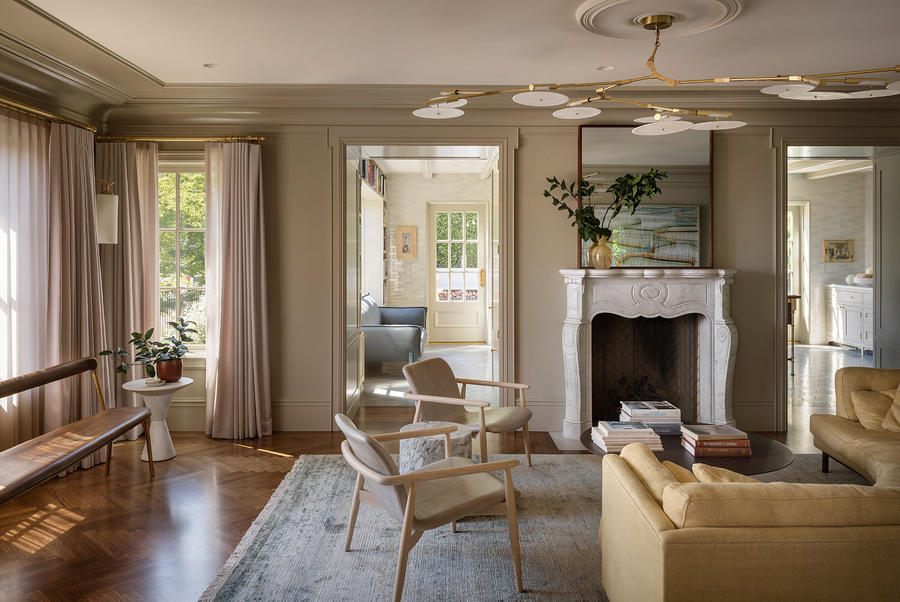
That idea of running the firm from behind—what are the pieces of work that you really love?
I love space planning. It’s my greatest joy in life. There’s a right answer, you know? You can fix things, you can make them work—it’s tidy and clean and you get from point A to point B. I find the decorating part to be much more murky. There’s a million right answers and every color is beautiful in its own way, but some plans are bad and some plans are good. It’s clear. So I love that.
So are you involved in those aspects of every project?
Yes, 100 percent. At the start of the project, I’ll do my space planning, and then the junior and senior designer [on the project] each do their own space planning, and then we all come together and talk about what we did, why we did it, but without comparing notes beforehand. Good ideas come out that way, and I want everybody to get good at it, know how to do it and learn to think independently, but also to see how I think and how others think. That’s my favorite part—that and the photo shoots.
You talked about billing hourly for the residential work—why is that so important?
It’s just easier, you know? It is very hard to know how many times we’re going to have to redo something or how lengthy the process is going to be. People say they’re decisive and then they’re not necessarily that decisive after all. I also think it’s hard for them to really understand how much time it’s all going to take, and if you hit them with the whole number it’s kind of scary. We’ve been using an application called Harvest to carefully document our time and track each phase by task over the last five years. Now, when we have potential clients, we can say, “Well, on this $3 million project, our design fees were $400,000 and it was spent in this way.” So we’re not telling them theirs will be exactly that, but we can give them a transparent look at four recent projects to give them a good sense of where they’re heading.

How else do you approach that conversation about budget and money?
I haven’t approached it in a long time! I don’t talk to prospective clients until they’re signed up.
Wait, really? That’s amazing.
My job has changed radically for the better since January, when I hired Kate [Sullivan], who is the managing director of the office. I had been wearing both the design director and the managing director hats for 20 years, and I’d burnt out. She has taken all of that stuff off my plate, so I don’t review vacation requests or look at payroll or talk to potential clients. All I do is design and review design.
What a transformation that must be!
It is a game-changer. I went back to loving my job again. If you had talked to me this time last year, there was no COVID but I was way more depressed. It’s just too hard to do it all.
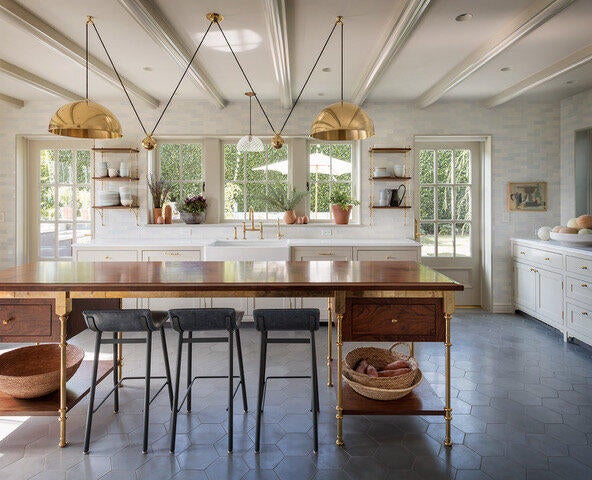
How did you know that’s what you needed?
I didn’t. I had started this thing called The One Percent Project here in Portland, because our office is in a high social-services area and we have a ton of homelessness around us, and the discrepancies between the work we were doing and [what we saw] on the street was just too much for me. We’re in the process of rethinking and developing it, but we are hoping to divert 1 percent of people’s incomes toward all of these local nonprofits that are working around homelessness. I gave a talk at an art museum, and this woman who attended reached out to me afterward. We had lunch a few days later and she said, “If you ever had a place on your team … ”
She has a background in design, a two-year design degree, and she worked in management at Rejuvenation for [several] years, where she ran a team of 40 people, [before which] she was working in a marketing firm for a decade—so her experience was perfect and I just really liked her. We had a lot of honest conversations—I tried to be as transparent as I could about everything about me that might bug her. We were in this six-month courtship, and then she joined us and it’s been great. She has one-on-ones with everyone once a week and I’ve been allowed to disengage a little bit, which has been really good. Honestly, I probably would have closed up shop if I hadn’t hired Kate in January, because trying to make sure everyone’s OK and has enough work and all of that, plus trying to move my projects forward, it just couldn’t have happened.
Do you miss having a hand in the daily goings-on of the business?
No. And because she’s been [interviewing prospective clients] with one of the other designers—between the two of them, I keep having these perfect juicy plums land in my lap. They’re doing a great job. There’s a lot of filtering. They’ll talk to people for several months sometimes, going back and forth about this and that. I don’t miss it.
I wish I had allowed myself to separate from the business organization, the running of it, earlier. I was really miserable for a long time. But then, maybe there was no one else on earth who would have been as good as Kate. I hate numbers and spreadsheets and bottom lines and wondering if people are billing enough—I just hate it. That is never why I started [my business]. And I don’t think about it anymore, so that’s better. I think that is something for other designers [to consider], especially as they’re starting out, to keep reevaluating what it is you’re good at, what you like, what you don’t like, and allow yourself to not do the things you hate.

Did you feel the pressure, as principal, to be in charge of those things?
Oh, for sure! My desk was in the back of our big, open office and there were whole quarters where I felt like my job was just sitting there waiting for bad news. Which chair broke, who is sick today—now, I never get any bad news. It really has to be a disaster for me to hear about it, and that’s great.
That requires a tremendous amount of trust, I would imagine.
But also, I wanted to give Kate full disclosure and then really empower her. At the start, she would say, “What would you do about this?” And I would say, “Why don’t you tell me what you would do, like if this was squarely in your court? Let me know what your instinct is first.” So she was off and running really fast.
You mentioned junior and senior designers. How is the rest of your team structured?
It’s something that I have wrestled with because as people stay in the firm and gain seniority, they want a [new] title, and they don’t always have to want to keep doing the same nitty-gritty stuff. It’s certainly understandable. But if people aren’t constantly turning over, you end up with all senior designers. I don’t have any answers. It’s a business-y thing I find confusing.
Is there a set path?
When I first started hiring people in Portland, I would instantly throw them in the deep end. There was no senior or junior—they would just start: “Here, you’re in charge of this project.” Now, there’s this long period as a junior first, but if people stay for a long time and there’s not turnover of seniors, how do the juniors move up? It’s tricky.
It sounds like an amazing place to work if no one wants to go!
Thank you! Yeah, and I don’t want them to go, either, but I do want upward mobility and growth opportunities for younger people.
Do the current junior designers want the same things that your [original] junior designers wanted, or are their goals different?
I haven’t had many employees with very pointed goals. The goal seems to generally be: Do good design work and maintain a nice life-work balance. I think that’s a Portland thing—it’s different than New York. You’re not just your job. They want to go hiking on the weekends.

You’ve worked in the sustainability space. When clients hire you, is that part of what they are coming to you for?
We are in real reaction mode with regard to the structure that we’re working within. We do not have a specific look, and our projects vary from one to the next. Where I finally landed with the green stuff was just: Don’t screw it up. You’re not going to save the Earth remodeling people’s kitchens, but maybe this kitchen doesn’t need to be remodeled again after you do it. Like, think about that house, and about what might have been there originally, what materials make sense for it, and with all of those big permanent things, trying to avoid being trendy.
How much of your work these days is national versus in Portland?
It’s 90 percent national.
When did you go from working locally to working nationally?
Maybe six or seven years ago, and then it pushed more and more in that direction—it’s been a gradual process, and right now we only have two or three projects in Portland.
Does Portland, as a place to live and work, play a role in the heartbeat of the firm?
I think there’s a certain quality of life here that people enjoy. There is also a tremendous maker community here—there are ceramic artists, two of my best friends are glassblowers, a ton of woodworkers, a guy who does amazing leaded glass, metal guys and leather guys. We like to micromanage [the custom furniture in our projects], so we do it here and send it to wherever the projects are, and we rely heavily on that community of creative makers.
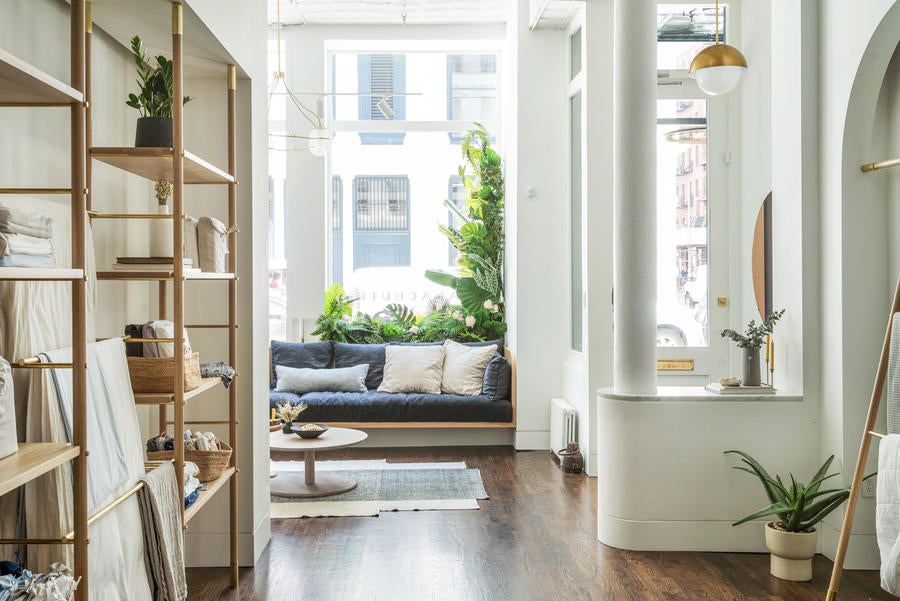
What’s keeping you inspired right now?
For a long time, it was a point of pride that we were always designing from scratch—we probably design about 50 percent of the furniture that goes into our projects. It was this constant flow of creativity, but it’s also exhausting and frustrating in a way, because you can’t ever refine something. You do it once and then you think, Oh, if I did it again I would do this. But you don’t do it again.
Now that Kate’s here, we’ve been talking about product. I designed a lighting line at the start of the year, and Roll & Hill is going to be manufacturing it. I had two ideas and I couldn’t really let go of either one. They’re both based on my past: One is California wood, earthy, pottery; and the other is a little more refined—my mom’s French and I’m a French citizen, and it just reminds me more of France in its fanciness. That’s in production, and it’s a licensing agreement, so I design and they take care of everything else.
But then we thought: Is it interesting to make products and sell them ourselves? So I designed a couple lines of encaustic tile, and we have two manufacturers in Mexico that we’re beginning to explore working with, and I think we’re going to try them both. We’re having two made by each and we’re going to see how that process goes, and maybe sell those ourselves. We’re also starting a big team project doing design direction for a furniture line. It’s got lots of tricky parts and pieces, so we’re going to see if it feels like a good fit once it’s all designed, and if not, then that’s a question mark. But if you do anything for such a long time, you’ve got to keep working it from different angles or it becomes kind of dead.
In addition to designing products, Kate and I are morphing that One Percent Project idea to start imposing a 1 percent tax on all of our invoices and redirecting that money to local nonprofits working around homelessness. From there, we really want to bring other companies on board. I’d like to try to make a difference. I can see the bottom falling out of the country and it just makes my heart heavy, so that feels good to do something, or at least try to do something.
To learn more about Jessica Helgerson, visit her website or find her on Instagram.
















